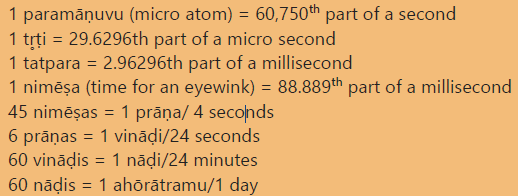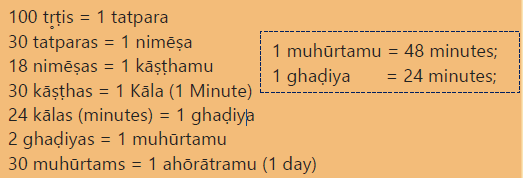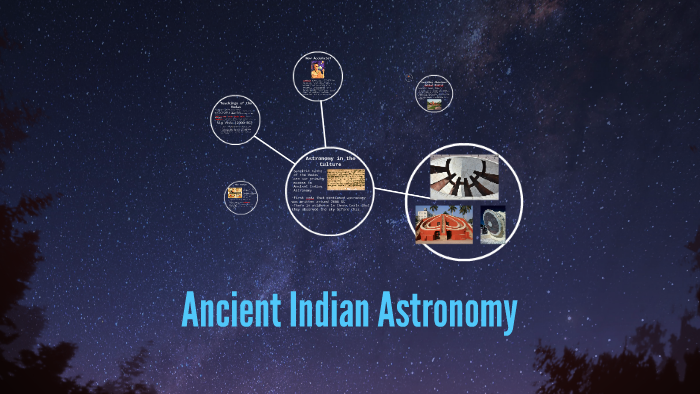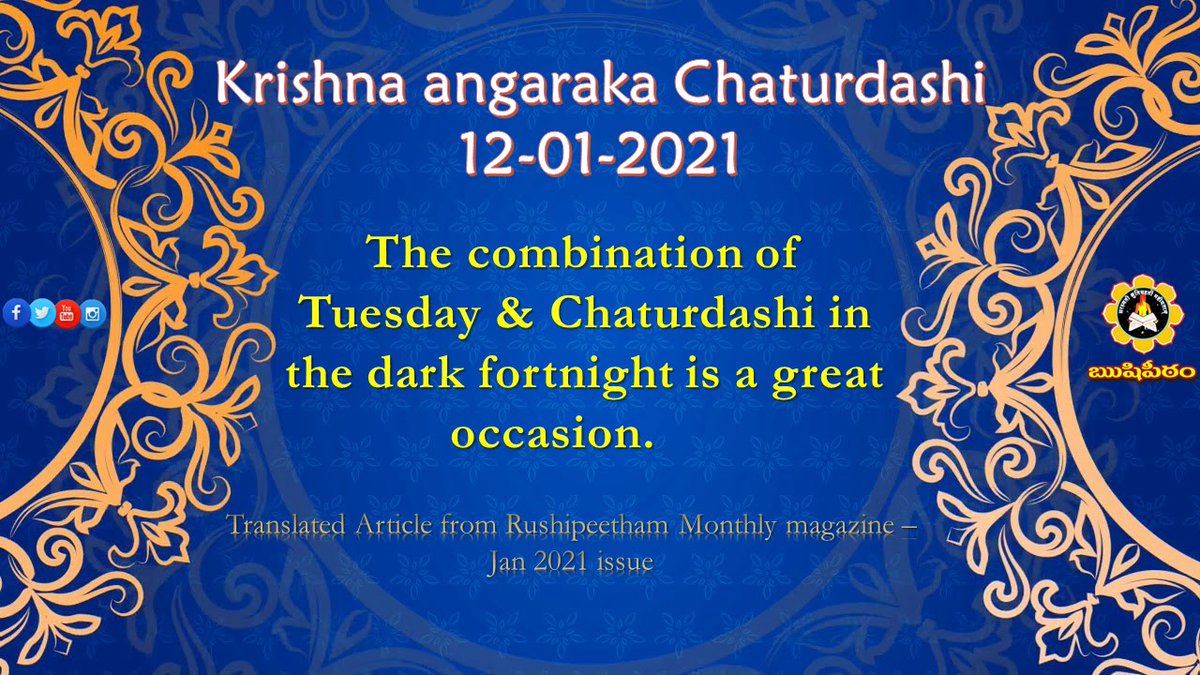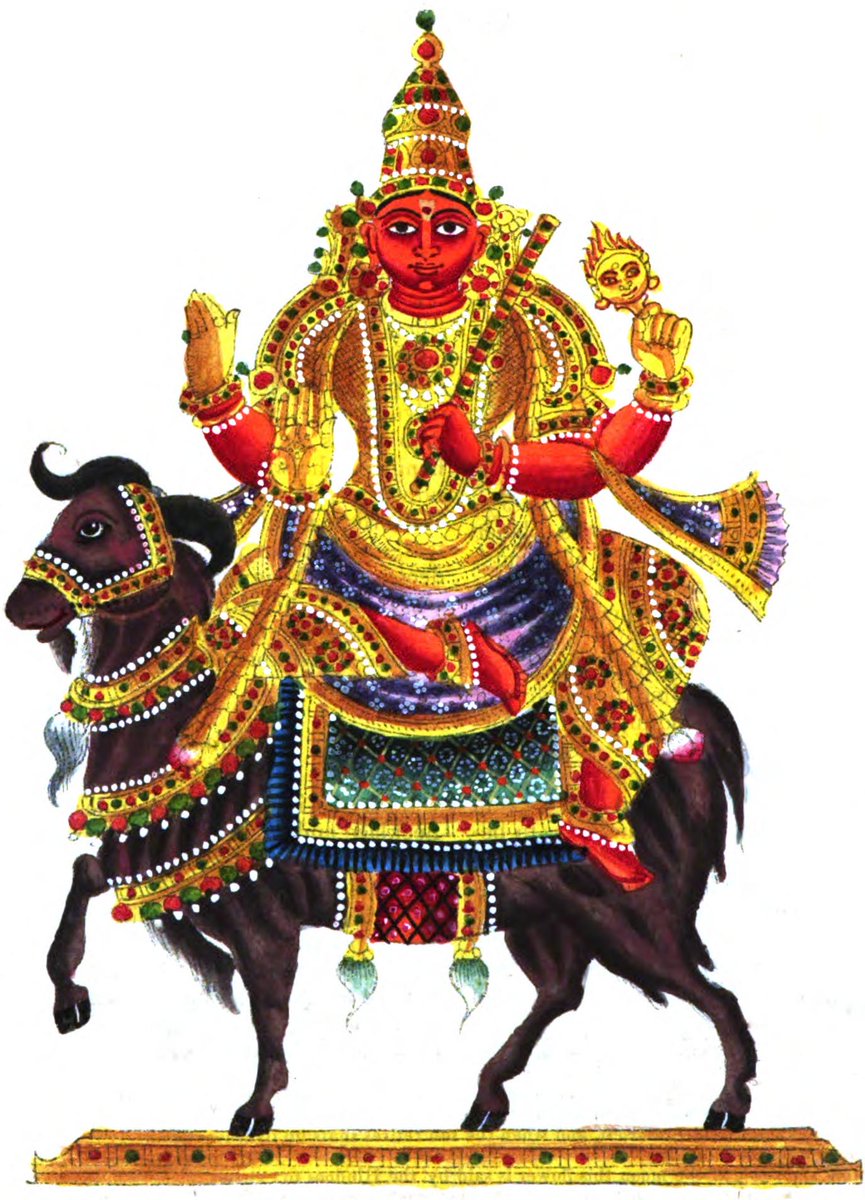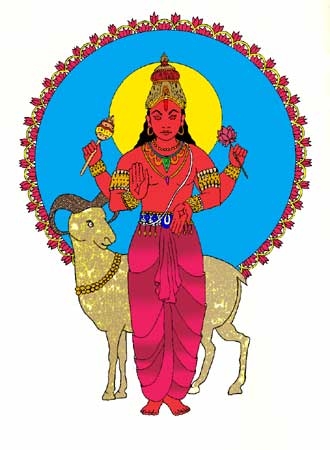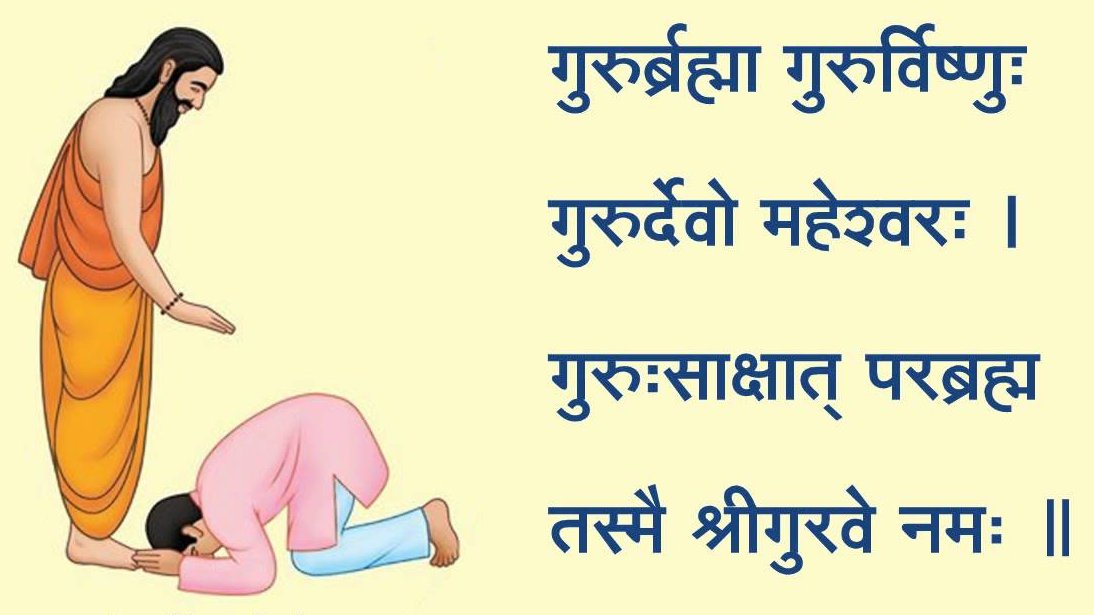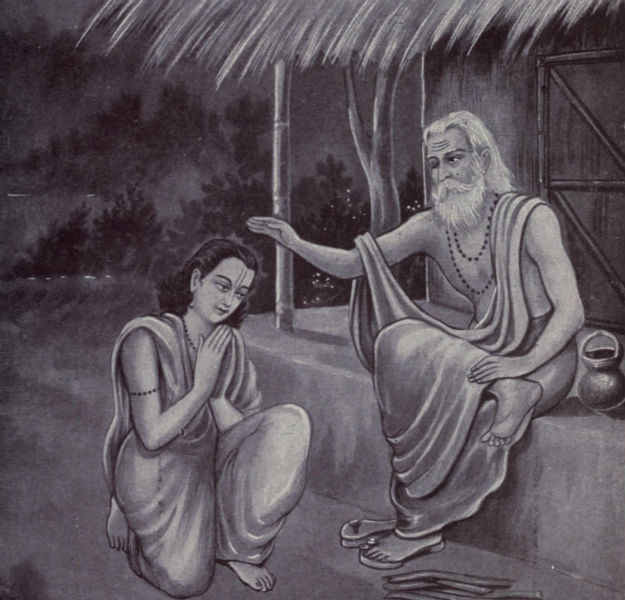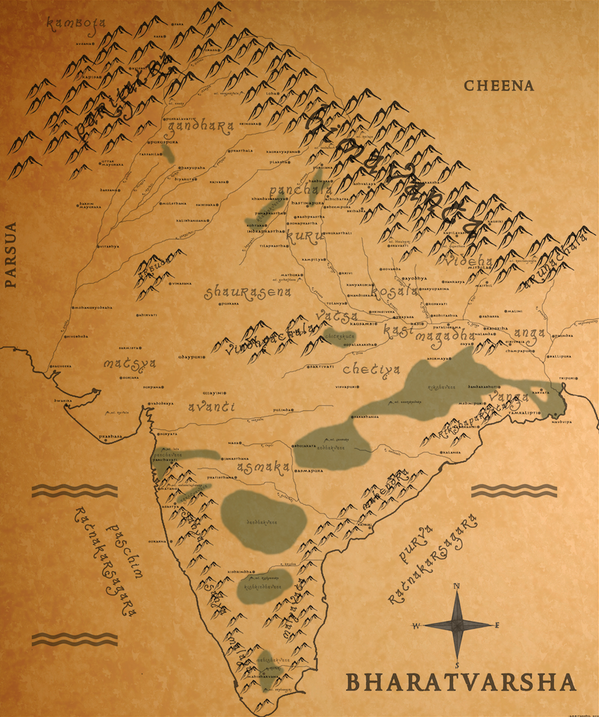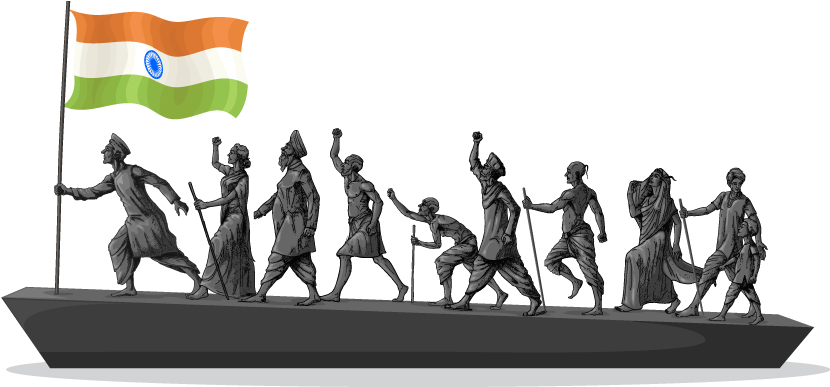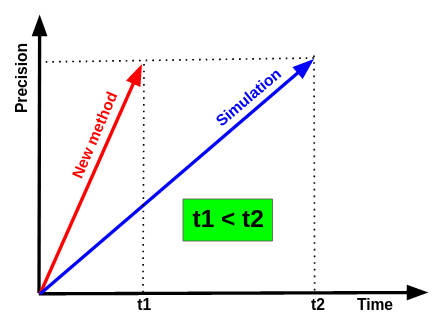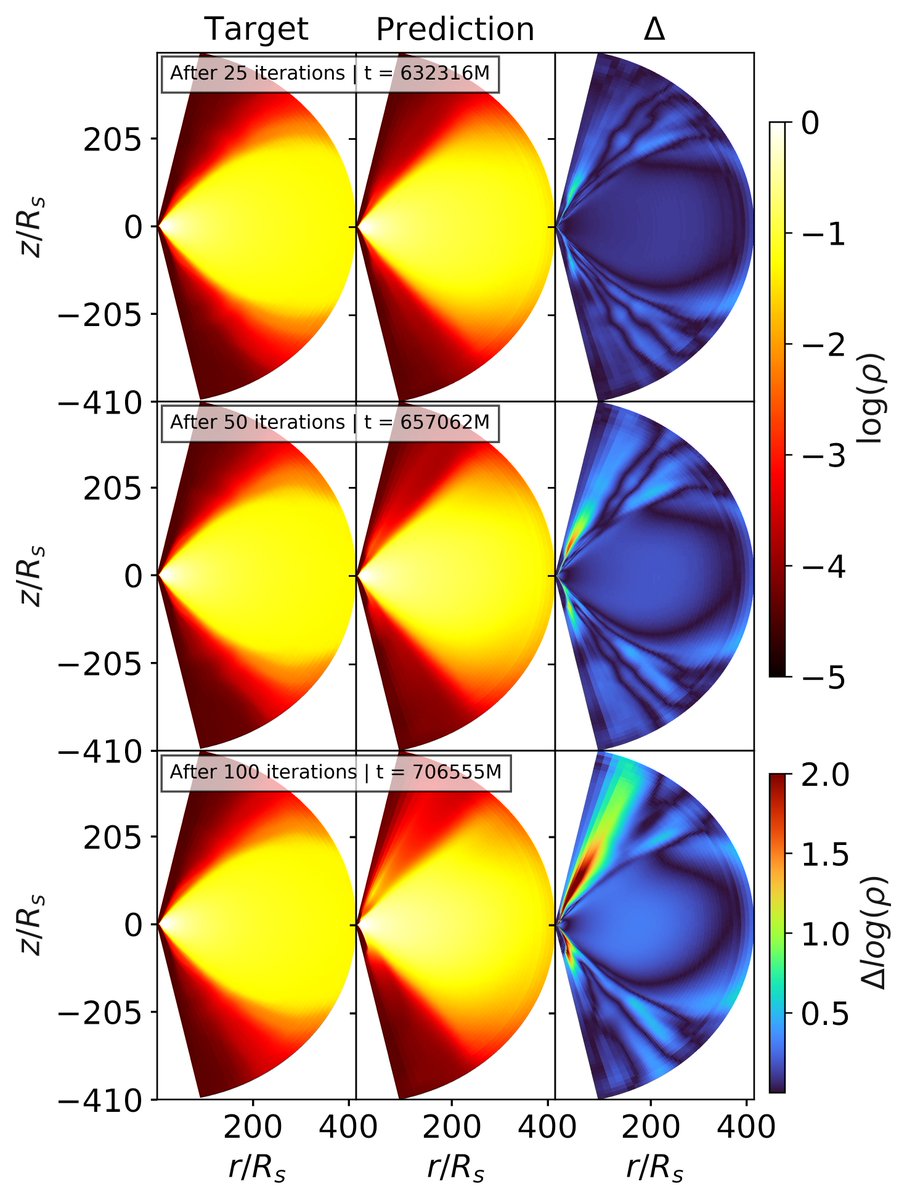The distinction of measuring the time in a scientific manner is achieved only by Bhāratīyas. Time has been measured from the smallest dimension to infiniteness. Even Time is envisioned as God and venerated. Paramēśvara was extolled as ‘Mahākāla’, the very embodiment of Time.
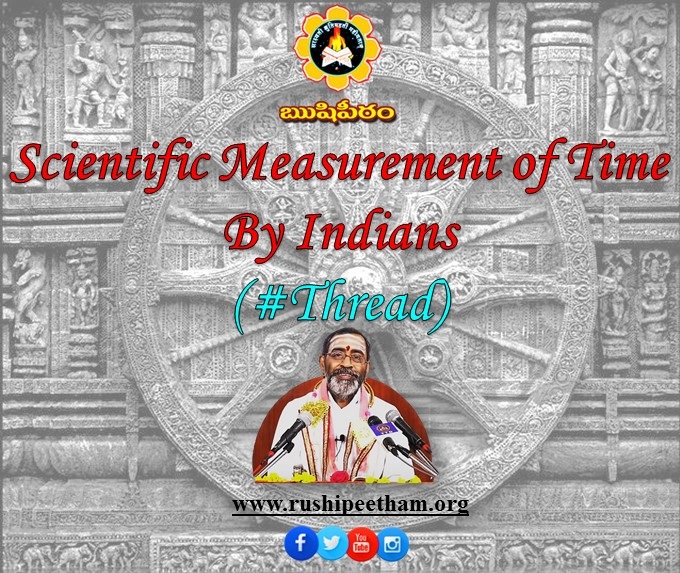
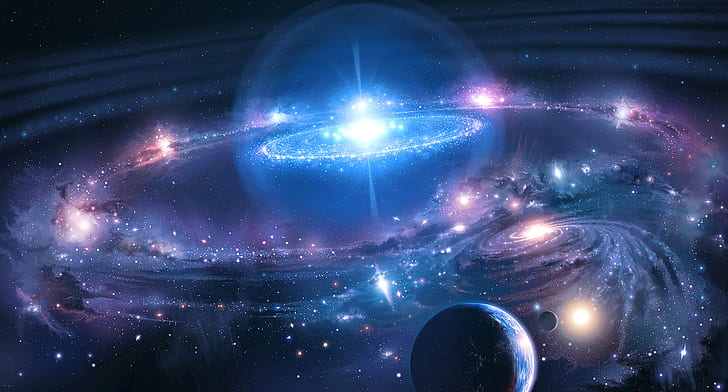
1 day is divided into 24 hōras. Based on this only, later a day is divided into 24 hours.
आरुणो अरोचनो मासक्रिन् - मासानां चन्द्र मासानां च कर्ता भवति !!
Fortnights, months, and years are counted based upon the movement of Sun and Moon.
Coz it is hard to count fortnights based on Sūrya Siddhānta,
Time is divided giving names to twelve months & 60 years.
Once the cycle of sixty years is complete, they repeat themselves.
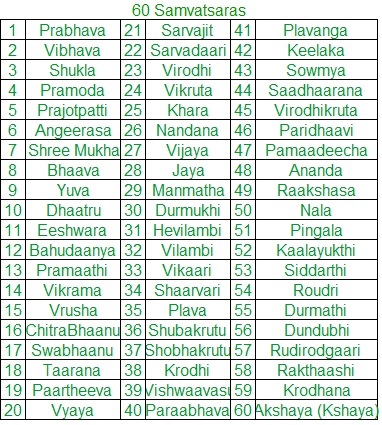

Based on the transformations in nature, one-year time is divided into 6 seasons.
Vasanta - chaitra, vaisākha
Grīṣma - jyēṣṭha, āṣāḍha
Varṣa - śrāvaṇa, bhādrapada
Śarad – āśvīyuja, kārtīkamu
Hēmanta – mārgaśira, puṣya
Śiśira – māgha, phālguṇa

Indian scriptures scientifically detail how to carve out one’s lifestyle based on seasonal changes.
Based on the arrangement of stars in the celestial sphere, the twelve zodiacs starting from Aries to Pisces formed. During the rotation of earth around Sun, Saṅkramaṇa is formed whenever Sun enters into that specific zodiac.

Two among them are very prominent –
1. Makara saṅkramaṇa day when Sun enters into Capricorn
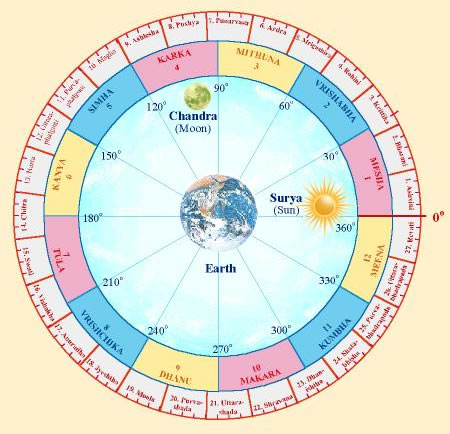
Makara Sankranti is celebrated as ‘Sankranti’ festival (Pongal).
āyana:
‘āyana’ means journey. One year is divided into two āyanas –
1. Uttarāyana and
2. Dakṣināyana.
The Indian Time measurement didn't stop with years, but went forward to calculate the Yugas.

Four yugas are mentioned taking the above yugas as parts within them. They are – Kr̥ta, trētā, Dvāpara & Kali.
2. trētā – 12,96,000 years
3. Dvāpara – 8,64,000 years
4. Kali – 4,32,000 years.
Combined, all these four yugas is called one ‘Mahā yuga’ = 43,20,000 years
Time is relative.
1 yr on earth is equal to 1 day for gods.
71 mahā yugas is 1 manvantara.
14 manvantaras are mentioned in our scriptures & each has diff Indra as head of gods.
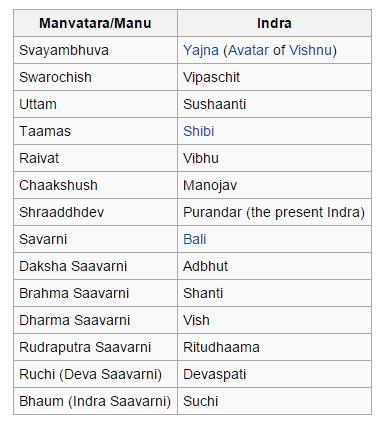
1,000 mahā yugas is called 1 kalpa.
1 kalpa is day & another kalpa is night for Brahma.
Lifetime of Brahma, the Creator 1Mahā Kalpa – 311,040,000,000,000 years
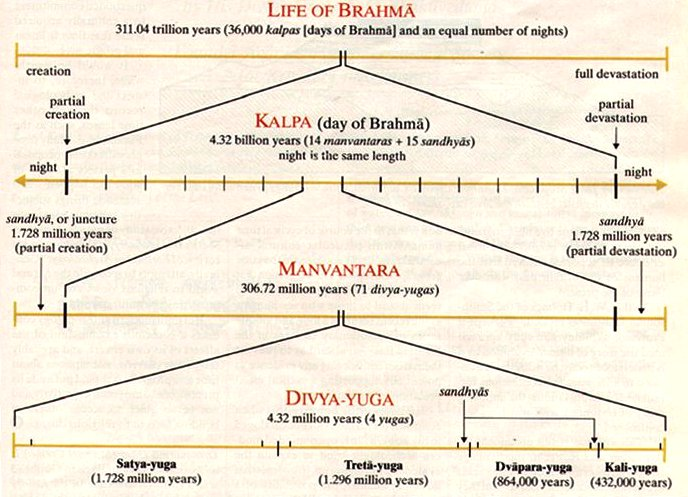
Current Manvantara – Vaivasvata, the 7th manvantara
Kalpa – Nighttime of Brahma
Mahā Yuga – 28th Mahā Yuga
Current Yuga – Kali Yuga
Current Year – 5121 year in Kali Yuga
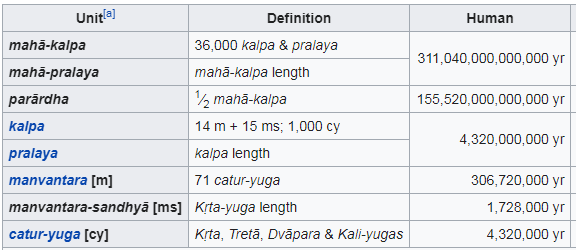
and the entire universe present at that time
dissolves into the Supreme. Again, creation
starts.
This is the ‘Cycle of Time’.
Details of Śakas :
Derived from the rule of great emperors, (not based on Christ),
1. Yudhiṣṭhira śakamu – Began in 3102 B.C. & continued for 3044 years
2. Vikrama śakamu – Began in 57 B.C. & continued for 135 years
Future śakas are also determined.
4. Vijayābhinandana śakamu – Duration is 10,000 years
5. Nāgārjuna śakamu – Duration is 400,000 years
6. Kalki śakamu – 821 years before the end of kali yuga.
Further scientific explorations of Bhāratīyas enabled them to establish the relationship between timelines of people living on this earth in relationship with stars & planets present in space.
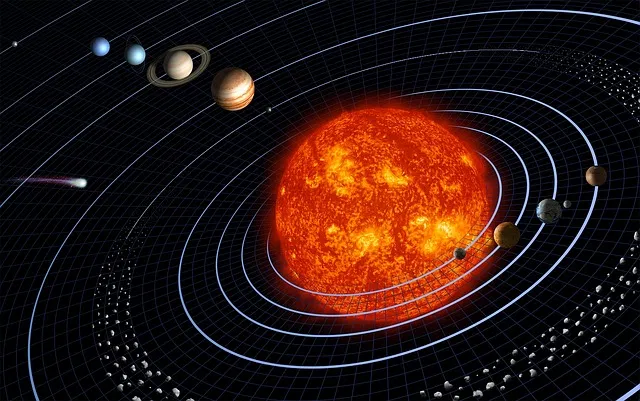
Even from the times of Newton, Physics proposed many theories such as Multiverse theory, which states ..
More from Brahmasri Samavedam Shanmukha Sarma
More from Science
You May Also Like
As a dean of a major academic institution, I could not have said this. But I will now. Requiring such statements in applications for appointments and promotions is an affront to academic freedom, and diminishes the true value of diversity, equity of inclusion by trivializing it. https://t.co/NfcI5VLODi
— Jeffrey Flier (@jflier) November 10, 2018
We know that elite institutions like the one Flier was in (partial) charge of rely on irrelevant status markers like private school education, whiteness, legacy, and ability to charm an old white guy at an interview.
Harvard's discriminatory policies are becoming increasingly well known, across the political spectrum (see, e.g., the recent lawsuit on discrimination against East Asian applications.)
It's refreshing to hear a senior administrator admits to personally opposing policies that attempt to remedy these basic flaws. These are flaws that harm his institution's ability to do cutting-edge research and to serve the public.
Harvard is being eclipsed by institutions that have different ideas about how to run a 21st Century institution. Stanford, for one; the UC system; the "public Ivys".
Independent and 100% owned by Joe, no networks, no middle men and a 100M+ people audience.
👏
https://t.co/RywAiBxA3s
Joe is the #1 / #2 podcast (depends per week) of all podcasts
120 million plays per month source https://t.co/k7L1LfDdcM

https://t.co/aGcYnVDpMu

@NBA @StephenKissler @yhgrad 1. From Day 1, SARS-COV-2 was very well adapted to humans .....and transgenic hACE2 Mice
1. From Day 1, SARS-COV-2 was very well adapted to humans .....and transgenic hACE2 Mice
— Billy Bostickson \U0001f3f4\U0001f441&\U0001f441 \U0001f193 (@BillyBostickson) January 30, 2021
"we generated a mouse model expressing hACE2 by using CRISPR/Cas9 knockin technology. In comparison with wild-type C57BL/6 mice, both young & aged hACE2 mice sustained high viral loads... pic.twitter.com/j94XtSkscj
@NBA @StephenKissler @yhgrad 2. High Probability of serial passaging in Transgenic Mice expressing hACE2 in genesis of SARS-COV-2
1. High Probability of serial passaging in Transgenic Mice expressing hACE2 in genesis of SARS-COV-2!
— Billy Bostickson \U0001f3f4\U0001f441&\U0001f441 \U0001f193 (@BillyBostickson) January 2, 2021
2 papers:
Human\u2013viral molecular mimicryhttps://t.co/irfH0Zgrve
Molecular Mimicryhttps://t.co/yLQoUtfS6s https://t.co/lsCv2iMEQz
@NBA @StephenKissler @yhgrad B.1.1.7 has an unusually large number of genetic changes, ... found to date in mouse-adapted SARS-CoV2 and is also seen in ferret infections.
https://t.co/9Z4oJmkcKj

@NBA @StephenKissler @yhgrad We adapted a clinical isolate of SARS-CoV-2 by serial passaging in the ... Thus, this mouse-adapted strain and associated challenge model should be ... (B) SARS-CoV-2 genomic RNA loads in mouse lung homogenates at P0 to P6.
https://t.co/I90OOCJg7o

Here's the most useful #Factualist comparison pages #Thread 🧵

What is the difference between “pseudonym” and “stage name?”
Pseudonym means “a fictitious name (more literally, a false name), as those used by writers and movie stars,” while stage name is “the pseudonym of an entertainer.”
https://t.co/hT5XPkTepy #english #wiki #wikidiff
People also found this comparison helpful:
Alias #versus Stage Name: What’s the difference?
Alias means “another name; an assumed name,” while stage name means “the pseudonym of an entertainer.”
https://t.co/Kf7uVKekMd #Etymology #words
Another common #question:
What is the difference between “alias” and “pseudonym?”
As nouns alias means “another name; an assumed name,” while pseudonym means “a fictitious name (more literally, a false name), as those used by writers and movie
Here is a very basic #comparison: "Name versus Stage Name"
As #nouns, the difference is that name means “any nounal word or phrase which indicates a particular person, place, class, or thing,” but stage name means “the pseudonym of an

